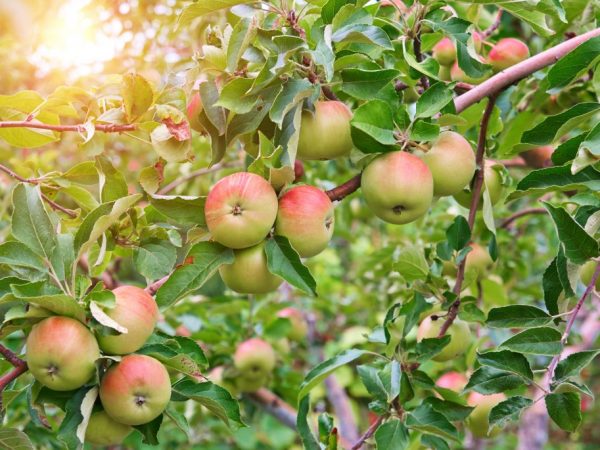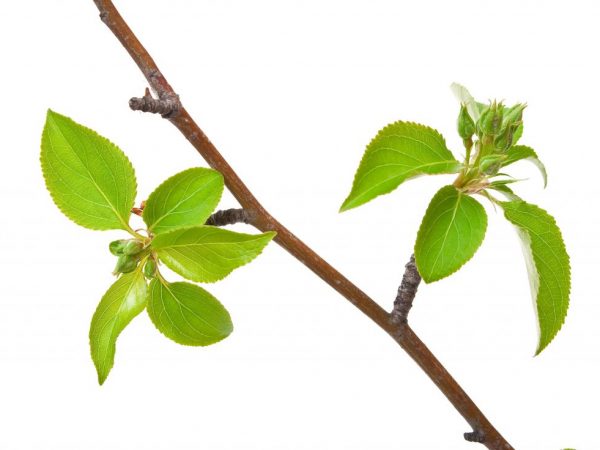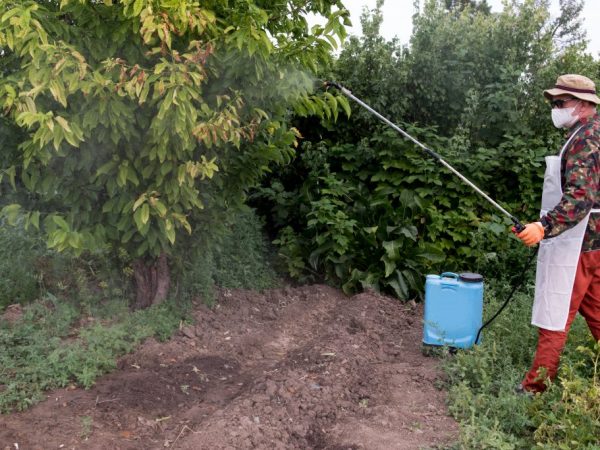Apple variety Airlie Geneva
The Apple tree of Airlie Geneva is one of the earliest ripening varieties, the fruits of which ripen at the end of July. It was bred in the 70s by American breeders at an experimental station in Geneva. And since the 80s, it has become the property of the wide masses of gardeners in various countries and is still very popular.

Apple variety Airlie Geneva
Characteristic
Airlie Geneva is a medium to above-medium apple tree (2 m to 3.5 m) with a strong trunk and a dense spreading crown. The period of intensive growth of the tree occurs in the first years, and slows down during fruiting.
This variety does not have any subspecies, mostly due to its size, since the breeding of columnar and dwarf varieties is not practiced for this growth.
Apples have an average size of 100-170 g, taste sweet and sour with a delicate aroma. The greenish rind is covered with a bright pink blush, the flesh is creamy.
The tree itself is resistant to droughts and winds, tolerates frost well (with the exception of young seedlings growing in a lowland on moist soil - the roots may suffer from frost).
The apple tree is not very susceptible to diseases, but it can suffer from scab and bacterial diseases.
The harvest is good: from 40 to 120 kg per season, it needs to be harvested in several stages. The following varieties will become pollinators for him: Delicacy, Gloucester, Golden Delicious, Idared.
Dignity
- The Geneva apple variety is very early and ready to eat at the end of July or beginning of August.
- The tree gradually yields the harvest, thus extending the fruiting period and making it easier to harvest. An adult produces good yields annually.
- Since the apple tree is fast-growing, the first harvest can be harvested already in the second year after planting.
- This variety is resistant to cold and heat, as well as to most pests.
- Apples are beautiful and healthy, with a high content of vitamin C, carotene, pectins. (Thanks to the pectins, the fruits are great for making jams, jellies and marmalades.)
disadvantages
- The keeping quality of fruits is small - it does not exceed 4 weeks. It is better to eat apples right away or process them into juice, compotes, jam.
- Apples of the Geneva variety are suitable for personal consumption, but not for sale, since they do not retain their presentation for a long time.
- Needs pollinators.
Landing
The best place for seedlings is a well-lit area where water does not stagnate.
Planting dates are from mid-September to late October. In this case, it is desirable that the air temperature is not higher than 10 ° C.
If the soil on the site is fertile, you do not need to fertilize the hole in advance. On less fertile soils, a hole is dug a month before planting, filling it with peat, compost, and mineral fertilizers.

For planting, you need to choose a well-lit area
The depth of the pit for planting is 60-70 cm, the diameter is 80-100 cm. First, drainage is laid, and then a soil mixture from the dug earth and mineral fertilizers. A peg is driven into the hole for support (the size of a tree).
The seedling is placed in a hole and the roots are properly straightened - the root collar remains above the ground level. They are covered with soil mixture from the earth, compost and fertilizers, and then tamped, watered well (in three stages with short interruptions) and mulch.
Care
The Geneva apple variety requires careful cultivation.
In the first year, the seedlings need to be watered especially carefully. If autumn is not rainy, water once a week (2 buckets of water each). Better to use a watering can. Top dressing is done only after watering, during the budding period, during flowering and fruiting.
For the first feeding, you can use nitroammophoska or humus, for the second - potassium sulfate, for the third - nitrophoska or herbal infusion.
Pruning
At the beginning of the growing season (April-March), the seedlings need pruning. The crown is formed into one trunk with a stem and skeletal branches.
- The first 50 cm from the ground are intended for the trunk - all buds and shoots are cut off.
- The second 50 cm - for several branches of the first tier, directed in different directions (the remaining branches are removed).
- On the third 50 cm, branches of the second tier are formed. In an annual tree, the top is trimmed and pinched so that the formation of lateral branches begins.
Weeding and loosening
The tree trunk circle should be regularly loosened and weeded from weeds.
In the spring, the soil around the trunk is mulched using humus, compost or hay. In autumn, the ground of the trunk circle is dug up 6-7 cm deep.
Pre-winter care
Before the beginning of winter, the soil around the trunk is covered with brushwood. For young trees, it is better to use a denser material, for example, burlap. You can ward off hungry winter rodents with thorny spruce branches tied to a trunk ..
Protection against diseases and pests
The Airlie Geneva apple tree is resistant to many diseases, but disease prevention is still recommended.
Treatment with iron vitriol is carried out before bud break. Before and after flowering - with urea and fungicides for scab.

Treating trees will protect against disease
In March, it is recommended to whitewash the trees in order to avoid sun-frost burns and some types of pests.
Collection and storage
According to the description, the Geneva apple tree bears harvest in several stages: in late July, early and mid-August. Apples are harvested as they ripen, used fresh or processed immediately.
The early fruiting period is not conducive to long-term storage - in a cold basement or in the refrigerator, fruits are stored for about a month.
Testimonials
According to gardeners, the variety is really early and early ripening - the first apples appear at the end of July, and the main harvest ripens by mid-August.
The description of "Airlie Geneva" does not always agree in terms of the taste of apples: for some, they are tasty and sweet, for others, sour.
Some gardeners believe that the matter is in the different amount of light on the site - the more sun, the sweeter the apples.
According to reviews, the keeping quality of the fruits makes you wish for the best, but they do not stale - they are eaten right away. In addition, they are convenient to process because of the three-stage fruiting. The apple tree grows wide and wide, which requires proper care, but thanks to the excellent harvests every year.
Conclusion
The Airlie Geneva apple tree is a great fruit tree option for lovers of early sweet and sour apples. When properly planted and well cared for, it invariably yields high yields. And although they cannot be saved for the winter, the juice and jam will definitely work out well.

